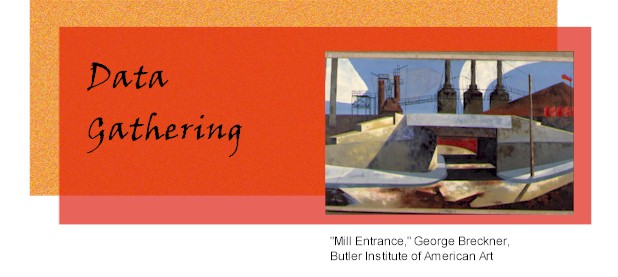
In Spring 2001, I focused my attention on exploring whether using a three-assignment sequence to move students toward interdisciplinary analysis in a step-by-step fashion would enhance their learning. Because my central concern in this research is not student attitudes but students' understanding and ability, I gathered data that demonstrated their ability to use and explain interdisciplinary approaches. But I also used surveys and interviews to learn about their perceptions of what experiences in the course -- assignments, in-class activities, readings, and so on -- were most helpful in developing their understanding.
To gain insight into these issues, I collected several kinds of data:
- Informal in-class assessments - an opening day questionnaire, a "muddiest point" response from several weeks into the term, an ungraded mid-term "exam," and a final open-ended reflection from the last day of class. These helped me learn about how well students understood core concepts, what difficulties they were encountering, and how they saw their own learning process.
- Samples of student work - samples of text webs, reading-texts-through-history papers, family histories, and final projects. In their papers, students had to apply the concepts and methods they were learning, and they used course materials in a variety of ways. As Bill Cerbin argues, understanding is the ability to use ideas, and students' projects show me how they are using course ideas and help me evaluate how well they understand.
- Interviews - one set of four interviews done approximately one month into the course, and another set of two follow-up interviews with two students completed during finals week. In the interviews, I learned more about how students viewed both course concepts and the learning process involved in the course. They offered valuable explanations of how the course had worked for them.
- Videotape of students working in class on an on-line assignment about one month into the term. John Stern of West Peak Media visited YSU and my class as part of his work as a filmmaker for the Visible Knowledge Project. He videotaped my students working with an interactive map of Youngstown from 1882, capturing the moment in the course when we moved from focusing on texts to looking more deeply in local history. While this activity was not core to my research on students' learning about interdisciplinarity, it did allow me to observe students' critical thinking processes and to see how they made use of their own prior knowledge.
- My own class journal, with observations about students' responses and performance, helped me think critically about the unfolding of the course, and when I looked back over it later, my journal helped me remember what had happened and reconstruct my own thoughts.